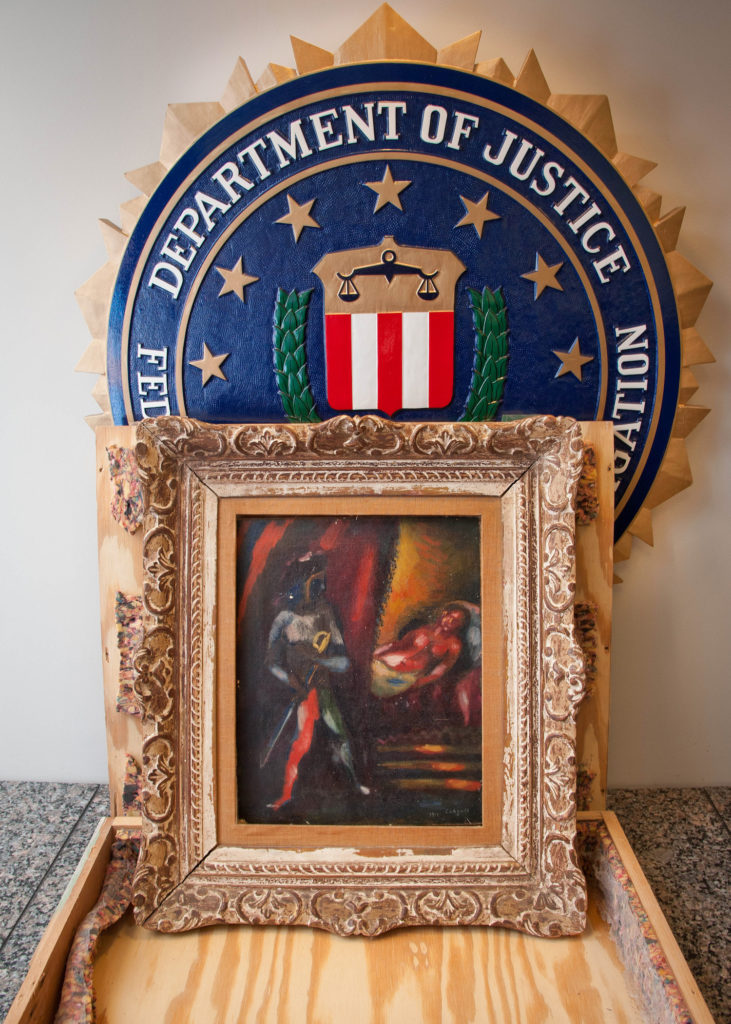Perspectives on looted art
The actor and activist Ossie Davis once said: ‘Any form of art is a form of power; it has impact, it can affect change—it can not only move us, it makes us move.’ In other words, art not only pleases and inspires, but it also provokes people to act. Those actions are not always legal, ethical, or moral. Lars van Vliet and Donna Yates both work in the field of looted art, from two different perspectives: private law and criminology.
For several years Lars, who specializes in private law and art law, worked as an expert witness on US legal proceedings about Nazi-looted art. This field of law combines for example private law, international law, and restitution laws from the 1940s and 1950s with European history and legal history. It calls for not only detailed knowledge of the law, but also for intricate knowledge of Nazi persecution, the history behind the looted artworks, and the often sad fate of their owners. Since the 1990s, there has been an increase in the number of proceedings in which heirs of the original owners seek restitution of looted artwork. A large number of these cases are litigated in the US rather than Europe.
Working from a criminological perspective, Donna Yates focuses her research on the smuggling of ancient cultural objects, namely antiquities. Demand for antiquities in wealthy countries inspires the formation of criminal supply chains that connect illegal sources to illicit markets. The result is the destruction of archaeological and heritage sites, the commodification and forced privatization of shared heritage, and a breakdown of cultural identity and social cohesion in communities that are direct victims of loss. Donna is particularly interested in the social and emotional factors that cause otherwise-law-abiding consumers to buy looted artworks, the structure of networks that supply looted art, and the ways that certain people in those networks avoid detection and prosecution. These issues are fundamental to her ERC-funded project “Trafficking Transformations: Objects as Agents in Criminal Networks”, which conducts research on crimes related to antiquities, collectible wildlife, and her particular favorite, dinosaur fossils.
Interest in the topic of art law and crime is growing
We are proud to support several junior colleagues in this field. Livia Solaro, a PhD researcher in Private Law, is currently writing her research on US proceedings on Nazi-looted art and their influence on the restitution of Nazi-looted art outside of the US. Anna de Jong, a PhD researcher in International and European Law, is researching the formulation, structure, and effectiveness of art law and policy at a European level. Diāna Bērziņa, who is a PhD researcher on Trafficking Transformations based in the department of Criminal Law and Criminology, works on topics related to sensory criminology and affect, with a focus on antiquities traded in the digital sphere. Furthermore, we also support two external PhDs in this field, both based in Criminal Law and Criminology. Irina Olevska has recently started a project looking at the assessment of the value of artefacts and heritage sites during criminal proceedings in Europe and Janine Heim is working on determining the security dimension of the movement of collectible wildlife from South Africa into Germany, with an element of comparison to the movement of looted antiquities.
We include our experiences in this diverse field into our bachelor course Law & Art and notice every year that our students, including many international students, are fascinated by this field of research. It is a topic that touches on nearly all the legal disciplines and we find that through art we are able to teach students fundamental aspects of law in an appealing way.
| Return to lawreview2021 |

Donna Yates, Associate Professor Criminal Law and Criminology, Faculty of Law.
Lars van Vliet, Professor of Art Law Private Law, Faculty of Law.
Donna and Lars are also in the early stages of developing an online post-academic course with modules about art law and art crime which would enable not only students but also practitioners to learn about art law and crime.